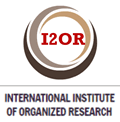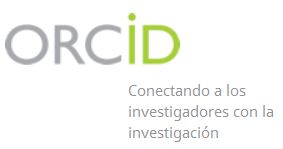Treatment with platelet-rich plasma and monopolar external fixation in patients with diaphyseal bone pseudoarthrosis
Keywords:
platelet-rich plasma, pseudoarthrosis, monopolar external fixation, bone healingAbstract
Introduction: pseudarthrosis occurs when the normal healing process of a bone fracture ceases. The use of platelet-rich plasma (PRP) is an alternative for treating this complication.
Objective: to describe the results of treatment with PRP and monopolar external fixation in patients with diaphyseal bone pseudoarthrosis.
Methods: a pre-experimental study was conducted at the Arnaldo Milián Castro Hospital in Villa Clara Province from 2015 to 2024. The population consisted of 35 patients with diaphyseal bone pseudoarthrosis treated with PRP and monopolar external fixation. Informed consent was obtained for the implementation of the therapy. The Álvarez Cambras and Stewart and Hundleh classifications were used.
Results: there was a predominance of males (23, 65.71%), and the average age of the population was 42 ± 11 years. The distal third of the tibia was the most common location of nonunion (52.94%).
After plasma infiltration, Grade III bone healing was observed at three months in almost 50.0% of patients, and side effects included burning and itching, and local infection (or both) in 1.4%. The clinical evaluation was very good in 68.7% and good in 48.6%.
Conclusions: grade III bone healing was achieved in almost half of the patients, side effects were minimal, and clinical outcome was good to very good. For nonunion, the researcher believes that the isolated use of platelet-rich plasma treatment is not recommended.
Downloads
References
1. Schmal H, Brix M, Bue M, Ekman A, Ferreira N, Gottlieb H, et al. Nonunion consensus from the 4th annual meeting of the Danish Orthopaedic Trauma Society. EFORT Open Rev [Internet]. 2020 [citado 23/11/2024]; 5(1):[aprox. 3p.]. Disponible en: https://pubmed.ncbi.nlm.nih.gov/32071773/
https://doi.org/10.1302/2058-5241.5.190037
2. Lobato SMB, Sánchez AR, Barriga MMA, Silva MJA, Gutiérrez-Mendoza I, Rodríguez BÁ, et al. Uso de ortobiológicos y aloinjerto en el tratamiento de pseudoartrosis con pérdida ósea diafisaria femoral. Orthotips [Internet]. 2022 [citado 23/11/2024]; 18 (1): [aprox. 3p.].Disponible en: https://www.medigraphic.com/cgi-bin/new/resumen.cgi?IDARTICULO=103737
https://dx.doi.org/10.35366/103737
3. Alford AI, Nicolaou D, Hake M, McBride-Gagyi S. Masquelet’s induced membrane technique: Review of current concepts and future directions. J Orthop Res [Internet]. 2021[citado 23/11/2024]; 39(4): [aprox. 2p.]. Disponible en: https://pmc.ncbi.nlm.nih.gov/articles/PMC8005442/
https://doi.org/10.1002/jor.24978
4. Vejarano-Solano JC, Shu-Yip SB, Ruiz-Semba CF, Vidal-Escudero JA. Uso de plasma rico en plaquetas autólogo en el tratamiento quirúrgico de seudoartrosis atrófica de fémur y tibia. Rev Med Hered [Internet]. 2013[citado 23/11/2024]; 24 (2): [aprox. 3p.].Disponible en: https://dialnet.unirioja.es/servlet/articulo?codigo=9491452
5. Adamczyk A, Meulenkamp B, Wilken G, Papp S. Managing bone loss in open fractures. OTA Int [Internet]. 2020[citado 23/11/2024]; 3 (1): e059.Disponible en: https://pmc.ncbi.nlm.nih.gov/articles/PMC8081484/
https://doi.org/10.1097/OI9.0000000000000059
6. Álvarez Cambras R, Ceballos Mesa A, Murgadas Rodríguez R. Tratado de Cirugía Ortopédica y Traumatología. Vol II. La Habana: Pueblo y Educación; 1986.
7. Hammer R, Hammerby S, Lindholm B. Accuracy of radiologic assessment of tibial shaft fracture union in humans. Clin Orthop Relat Res [Internet].1985 [citado 23/11/2024]; (199): [aprox. 4p.].Disponible en: https://europepmc.org/article/med/4042484
8. Stewart M, Hundley J. Fractures of the humerus: a comparative study inmethods treatment. J Bone Joint Surg. 1955; 37-A(4):[aprox. 2p.].
9. Bielecki T, Gazdzik TS, Szczepanski T. Benefit of percutaneous injection of autologous platelet-leukocyte-rich gel in patients with delayed union and nonunion. Eur Surg Res [Internet]. 2008 [citado 23/11/2024]; 40(3):[aprox. 4p.]. Disponible en: https://pubmed.ncbi.nlm.nih.gov/18277077/
https://doi.org/10.1159/000114967
10. Velázquez-Moreno JD, Casiano-Guerrero G. Algoritmo del tratamiento de la seudoartrosis diafisaria. Acta Ortopédica Mexicana [Internet]. 2019[citado 23/11/2024]; 33(1):[aprox. 2p.]. Disponible en: https://www.scielo.org.mx/scielo.php?pid=S2306-41022019000100050&script=sci_arttext
11. Mendoza Corredor DLA, Vallejo Márquez DM, Zarauza Valero DGA, Royo Solé D, JM, Carvajo Garcés DM, Bueno Gómez DM. Evaluación radiológica de los trastornos de consolidación de las fracturas: ¿retardo o pseudoartrosis? Seram [Internet]. 2022 [citado 23/11/2024]; 1(1): [aprox. 2p.] Diponible en: https://piper.espacio-seram.com/index.php/seram/article/view/9215
12. Filippini JP, Laborda H, Viñole N. Compresión-distracción en el tratamiento de pseudoartrosis de tibia distal utilizando el aparato de Ilizarov. Reporte de casos. An Facultad Med (Univ Repúb Urug) [Internet]. 2022[citado 23/11/2024]; 9(2): e402. Disponible en: https://pesquisa.bvsalud.org/portal/resource/es25/biblio-1403140
13. Bahney CS, Zondervan RL, Allison P, Theologis A, Ashley JW, Ahn J, et al. Cellular biology of fracture healing. J Orthop Res [Internet]. 2019;37(1):[aprox. 3p.]. Disponible en: https://pubmed.ncbi.nlm.nih.gov/30370699/
https://doi.org/10.1002/jor.24170
14. Kaspiris A, Hadjimichael AC, Vasiliadis ES, Papachristou DJ, Giannoudis PV, Panagiotopoulos EC. Therapeutic Efficacy and Safety of Osteoinductive Factors and Cellular Therapies for Long Bone Fractures and Non-Unions: A Meta-Analysis and Systematic Review. J Clin Med [Internet]. 2022 [citado 23/11/2024]; 11(13): [aprox. 3p.]. Disponible en: https://pmc.ncbi.nlm.nih.gov/articles/PMC9267779/
https://doi.org/10.3390/jcm11133901
15. Saginova D, Tashmetov E, Tuleubaev B, Kamyshanskiy Y. Effect of autologous platelet-rich plasma on new bone formation and viability of a Marburg bone graft. Open Life Sci [Internet]. 2023 [citado 23/11/2024]; 18(1):[aprox. 3p.]. Disponible en: https://pmc.ncbi.nlm.nih.gov/articles/PMC10668114/
https://doi.org/10.1515/biol-2022-0761
16. Van Lieshout EMM, Den Hartog D. Effect of platelet-rich plasma on fracture healing. Injury [Internet]. 2021[citado 23/11/2024]; 52 (Suppl 2):S58-S66.Disponible en: https://pubmed.ncbi.nlm.nih.gov/33431160/
https://doi.org/10.1016/j.injury.2020.12.005
17. Başdelioğlu K, Meriç G, Sargın S, Atik A, Ulusal AE, Akseki D. The effect of platelet-rich plasma on fracture healing in long-bone pseudoarthrosis. Eur J Orthop Surg Traumatol [Internet]. 2020 [citado 23/11/2024]; 30(8): [aprox. 3p.]. Disponible en: https://pubmed.ncbi.nlm.nih.gov/32617687/
https://doi.org/10.1007/s00590-020-02730-2
18. Gómez-Martín B, Sánchez-Rodríguez R, Martínez Nova A, Escamilla- Martínez E. Tratamiento de una fractura del proceso anterior del calcáneo con plasma rico en plaquetas: caso clínico. Rev Esp Podol [Internet]. 2019[citado 23/11/2024]; 30(2): [aprox. 2p.].Disponible en: https://dialnet.unirioja.es/servlet/articulo?codigo=7333323
19. Zhao Y, Zhang H, Li N, Li J, Zhang L. Chronic pain after bone fracture: current insights into molecular mechanisms and therapeutic strategies. Brain Sci [Internet]. 2022 [citado 23/11/2024]; 12(8): [aprox. 3p.].Disponible en: https://pmc.ncbi.nlm.nih.gov/articles/PMC9406150/
https://doi.org/10.3390/brainsci12081056
20. Andersen C, Wragg NM, Shariatzadeh M, Wilson SL. The use of platelet-rich plasma (PRP) for the management of non-union fractures. Curr Osteoporos Rep [Internet]. 2021 [citado 23/11/2024];19(1):[aprox. 3p.]. Disponible en: https://link.springer.com/article/10.1007/s11914-020-00643-x#citeas
Downloads
Published
How to Cite
Issue
Section
License
Authors who have publications with this journal agree to the following terms:
- Authors will retain their copyright and assign to the journal the right of first publication of their work, which will simultaneously be subject to a Creative Commons License / Attribution-Noncommercial 4.0 International (CC BY-NC 4.0) that allows third parties to share the work as long as its author and first publication in this journal are indicated.
- Authors may adopt other non-exclusive license agreements for distribution of the published version of the work (e.g., depositing it in an institutional repository or publishing it in a monographic volume) as long as the initial publication in this journal is indicated.
- Authors are allowed and encouraged to disseminate their work through the Internet (e.g., in institutional telematic archives or on their web page) before and during the submission process, which can produce interesting exchanges and increase citations of the published work. (See The effect of open access).





 december 15 2025
december 15 2025


